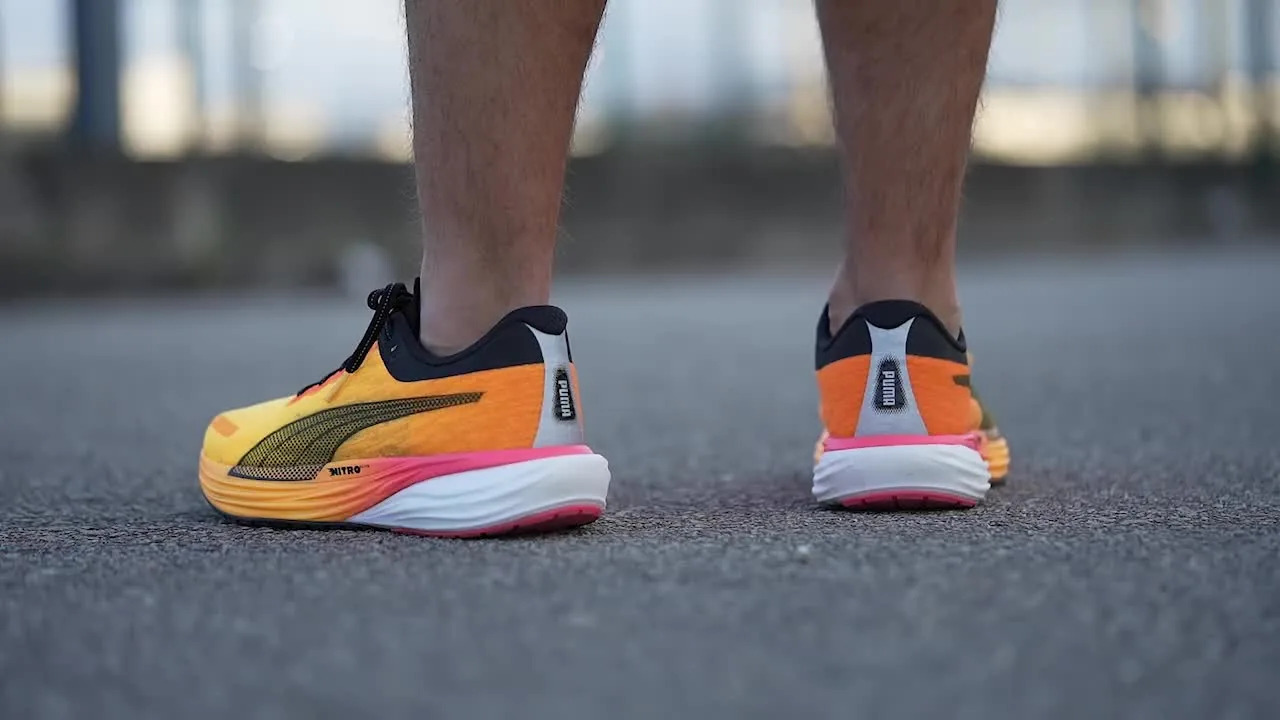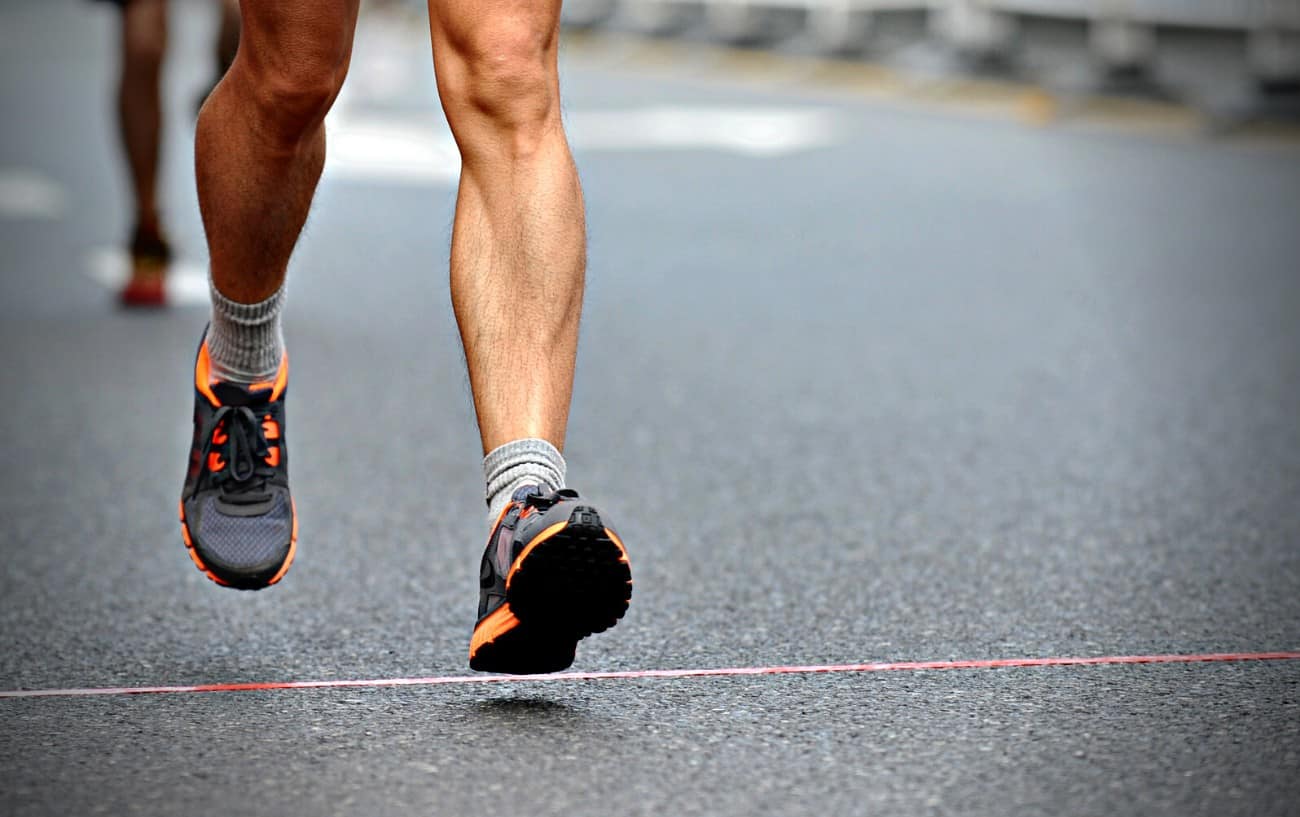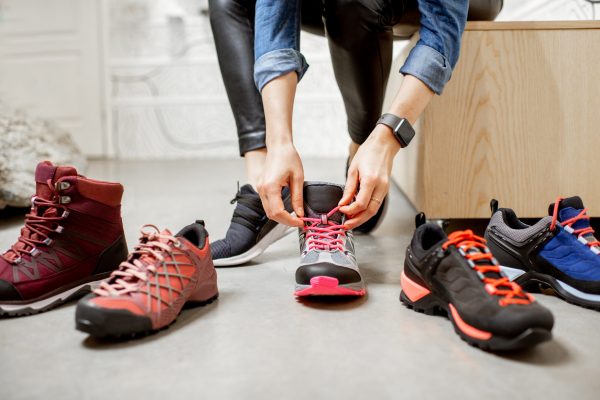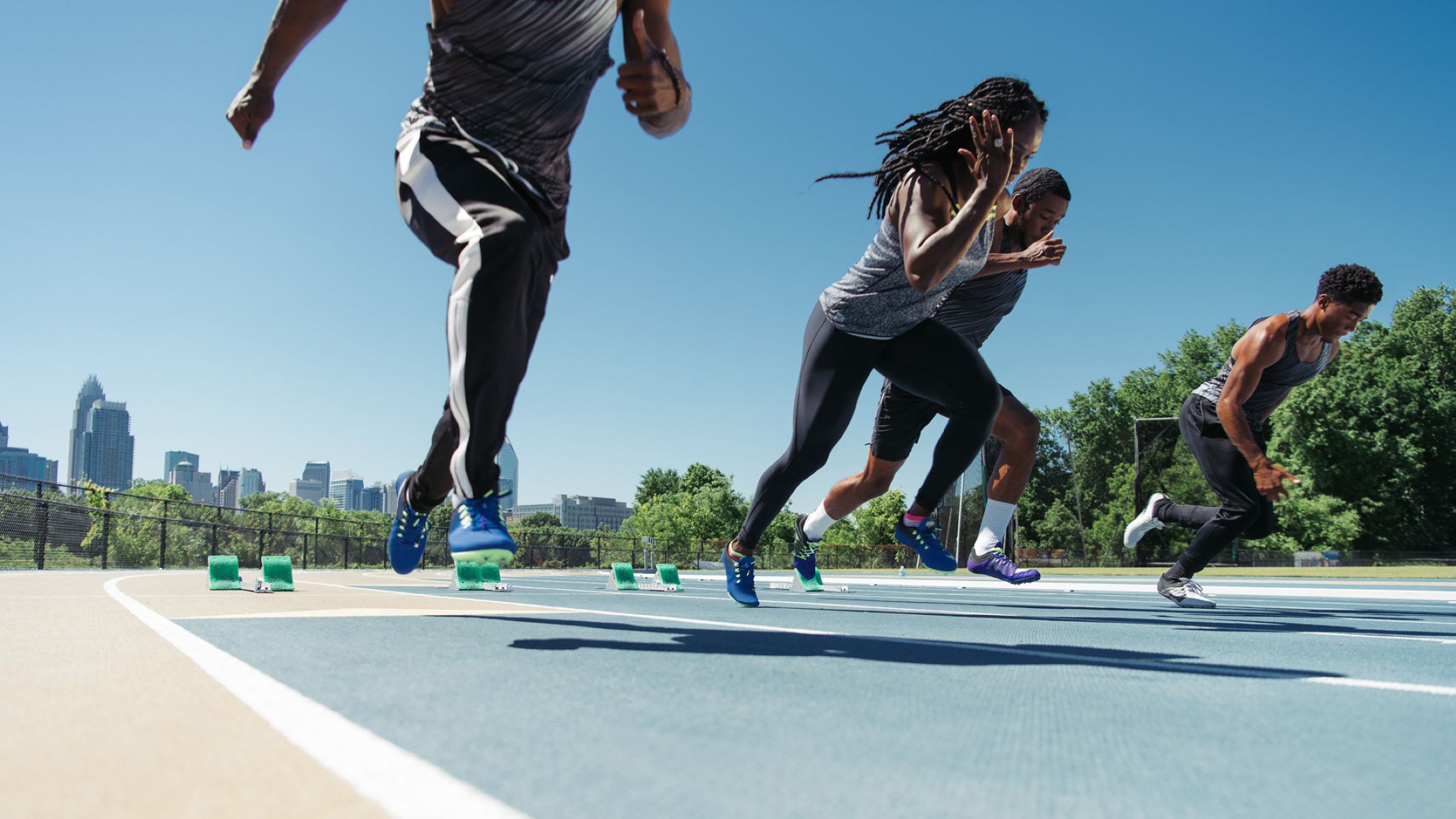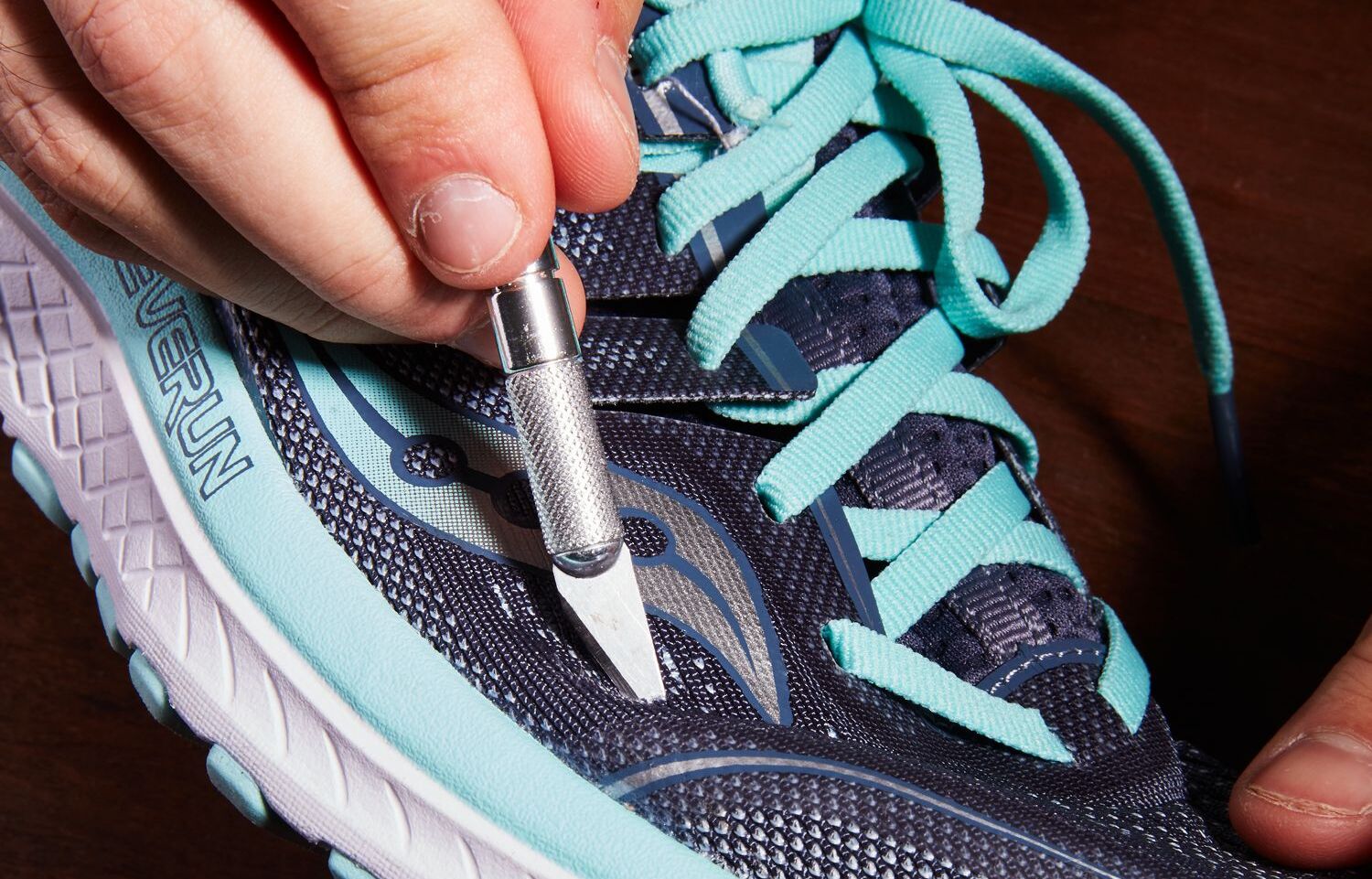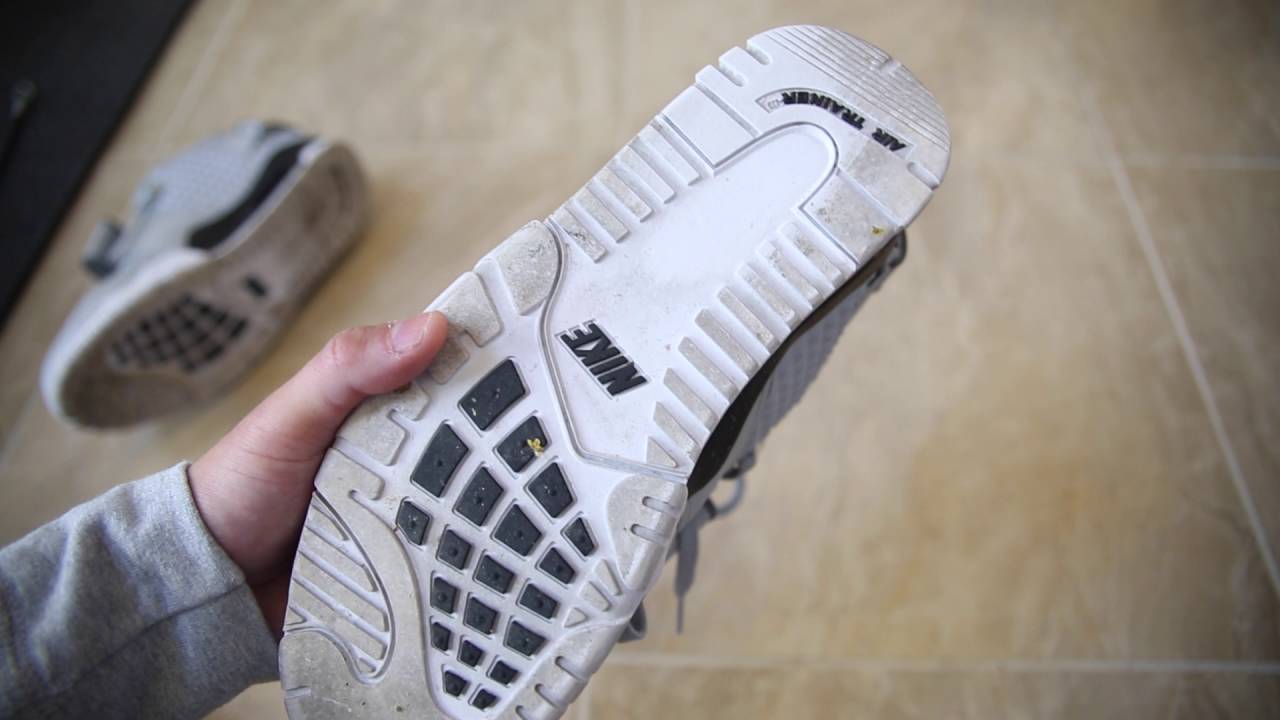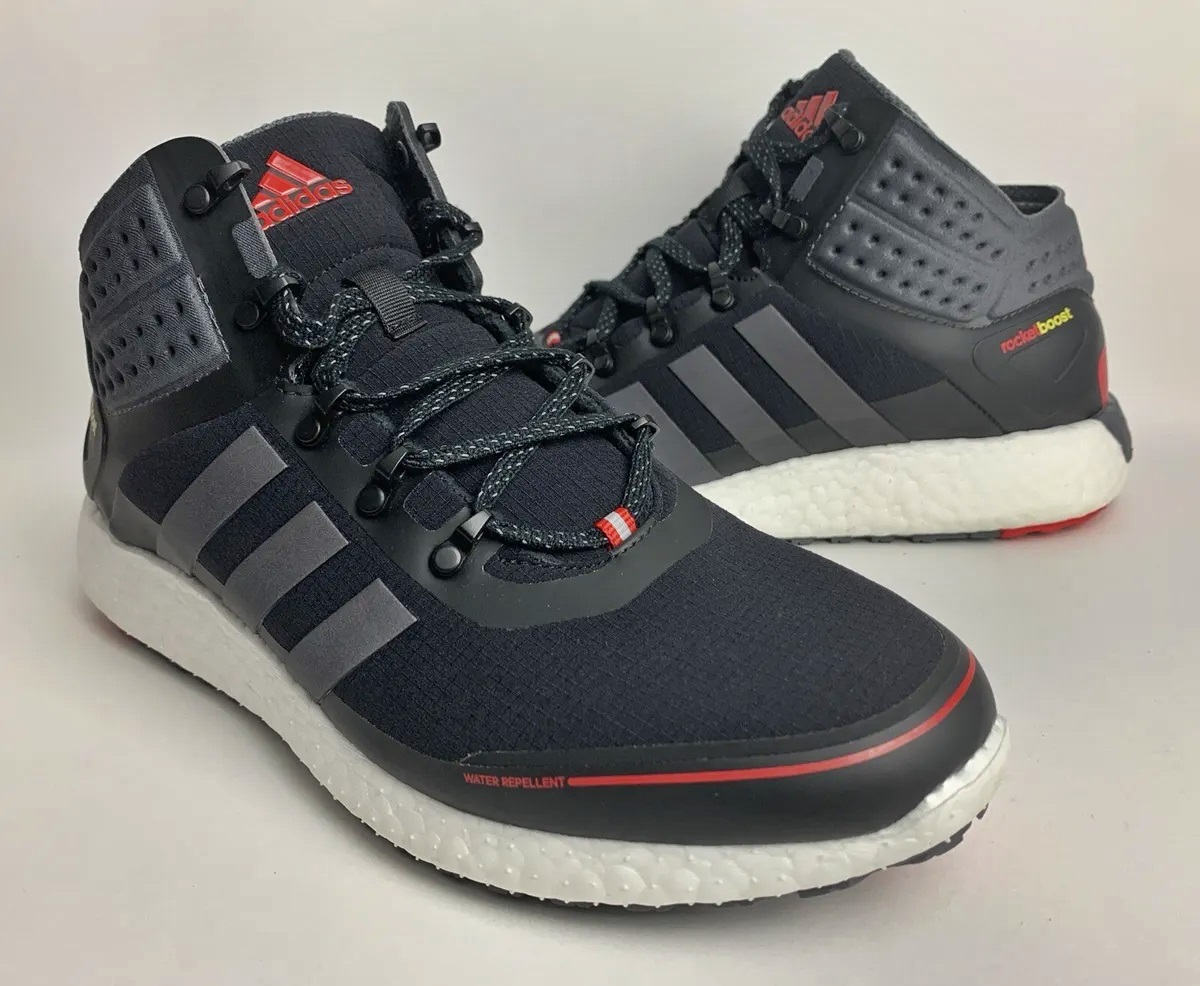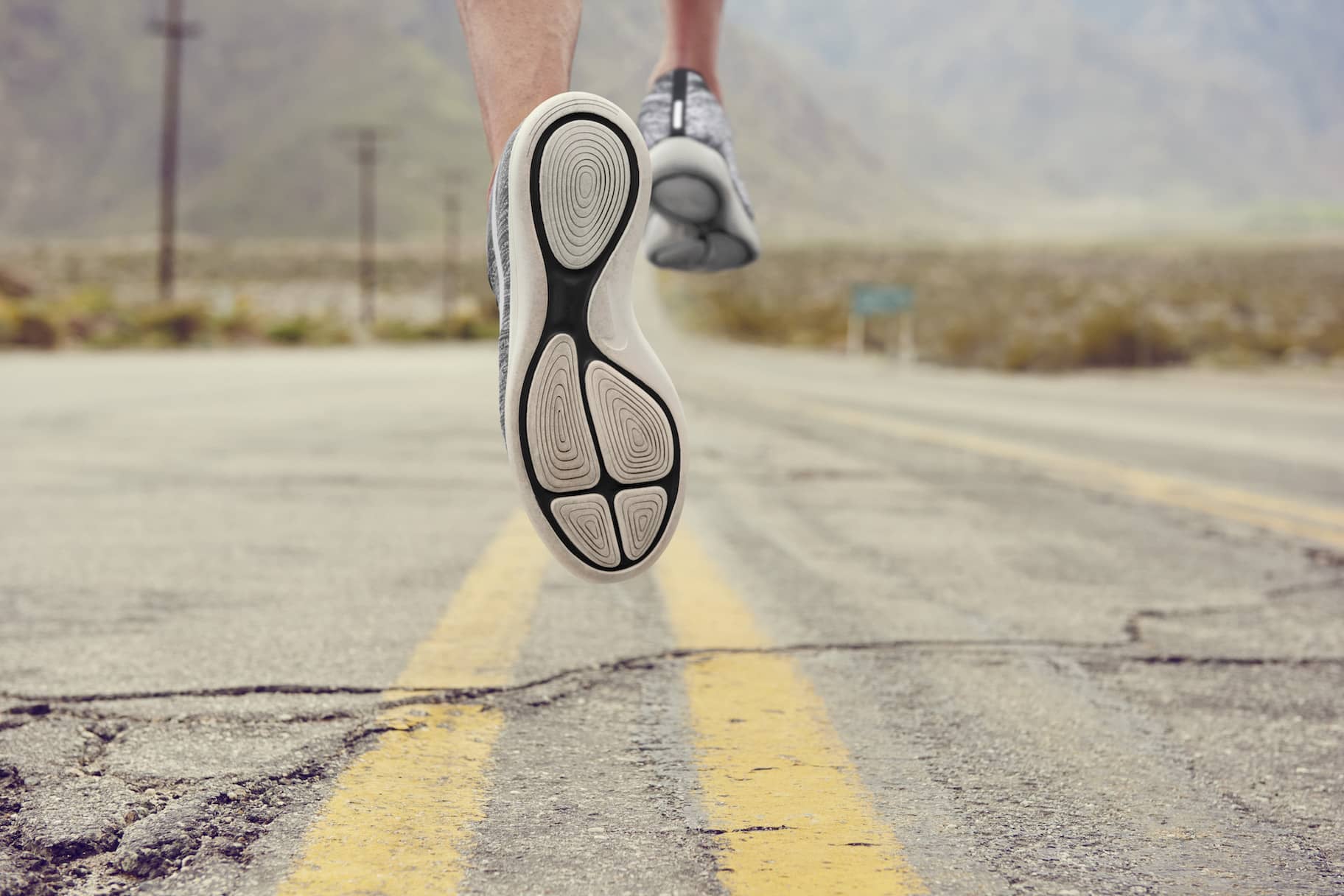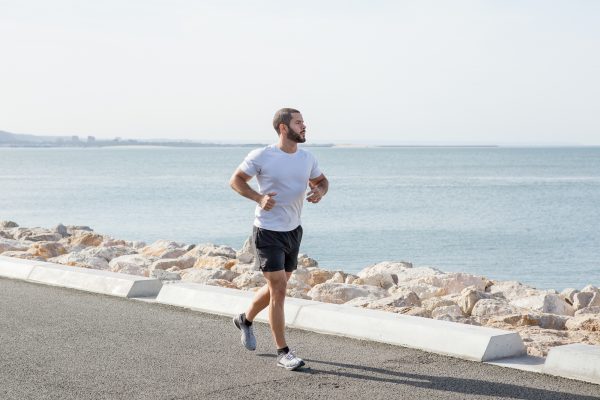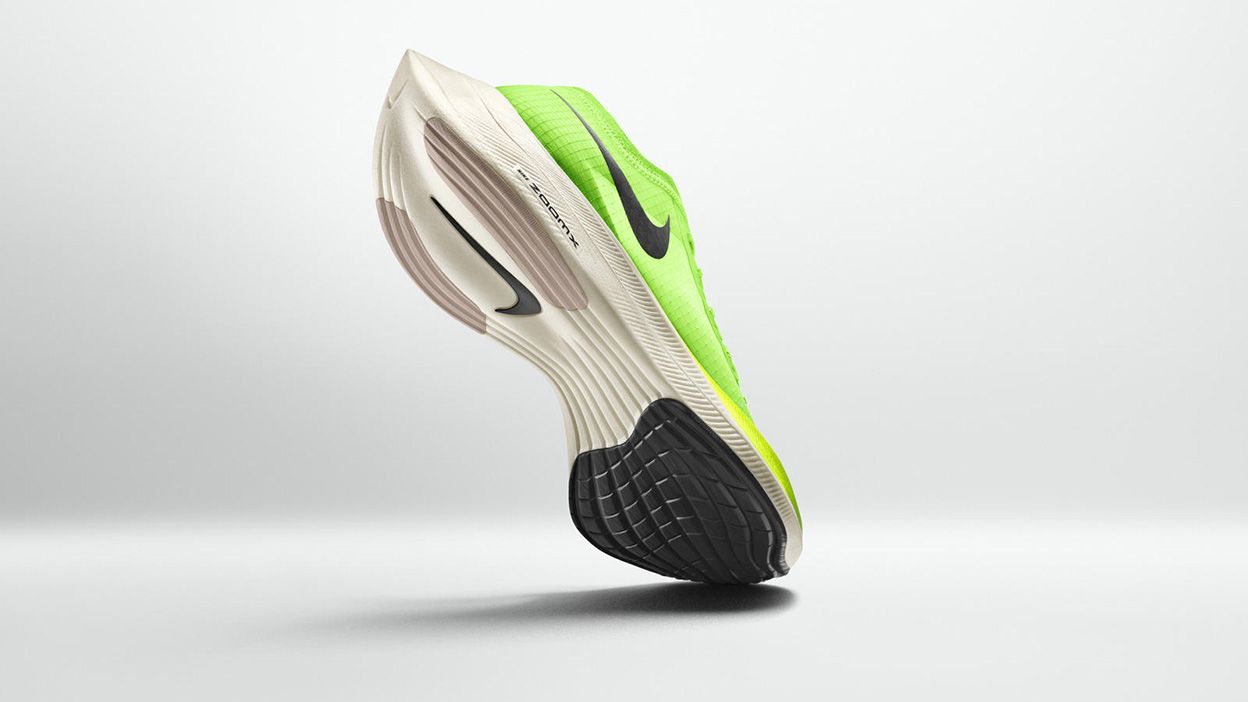

Featured
Which Sole Is Good For Running Shoes
Modified: August 19, 2023
Discover the best running shoe soles and find out why our featured sole is perfect for all your running needs. Shop now and enhance your performance!
Introduction
When it comes to running shoes, one of the most important factors to consider is the sole. The sole of a running shoe plays a crucial role in providing comfort, support, and protection to the runner’s feet. It acts as a barrier between the foot and the ground, absorbing shock and providing traction.
Choosing the right sole for your running shoes can greatly impact your overall running experience. It can determine the level of performance, stability, durability, and comfort you experience while running. With so many different types of soles available, it’s important to understand their differences and which ones are best suited for your specific needs.
In this article, we will explore the various types of running shoe soles and their pros and cons. We will discuss traditional rubber soles, Vibram soles, EVA foam soles, TPU soles, and carbon fiber plates. By understanding the benefits and drawbacks of each type, you will be better equipped to make an informed decision when choosing your next pair of running shoes.
Whether you’re a seasoned marathon runner or just starting your running journey, the sole of your running shoes is a critical component that should not be overlooked. So let’s dive into the world of running shoe soles and discover which sole is best suited for your running needs.
Understanding the Importance of a Good Sole for Running Shoes
When it comes to running, the sole of your shoes plays a vital role in providing the necessary support, cushioning, and traction for a comfortable and efficient running experience. A good sole can help absorb shock, reduce the risk of injury, and enhance your overall performance.
One of the key reasons why the sole is important is its impact on shock absorption. When you run, your feet are subjected to a significant amount of force with each stride. A good sole is designed to absorb and distribute this impact, reducing the stress on your feet, joints, and muscles. This not only helps prevent injuries, such as stress fractures and shin splints, but also provides a more comfortable running experience.
In addition to shock absorption, the sole of a running shoe also affects stability and traction. Running involves a lot of dynamic movements and changes in direction. A good sole with proper traction ensures that your feet have a secure grip on various surfaces, whether it’s pavement, trails, or wet conditions. This allows for greater stability and reduces the risk of slipping or sliding during your runs.
Furthermore, the sole of a running shoe can also influence the overall lifespan and durability of the shoe. A high-quality sole made from durable materials can withstand the constant impact and abrasion that comes with running. This means that your shoes will last longer and provide consistent performance over time.
It’s worth noting that the importance of a good sole can vary depending on individual factors, such as your running style, foot type, and the type of terrain you run on. For example, if you have high arches, you may require a sole with more cushioning to provide adequate support and shock absorption. On the other hand, if you’re a trail runner, you may prioritize a sole with more aggressive traction to handle uneven and slippery surfaces.
In summary, a good sole is essential for running shoes as it provides cushioning, support, stability, and traction. It helps absorb shock, reduce the risk of injuries, and enhance your overall running performance. By understanding the importance of a good sole, you can make informed choices when selecting your next pair of running shoes, ensuring that they meet your specific needs and help you reach your running goals.
Different Types of Running Soles
When it comes to running shoes, there are several different types of soles available in the market. Each type of sole comes with its unique characteristics, materials, and construction methods. Understanding the differences between these types can help you make an informed decision when choosing the right running shoe for your specific needs. Let’s explore some of the most common types of running soles:
- Traditional Rubber Soles: Traditional rubber soles have been the go-to choice for running shoes for many years. They offer excellent durability, traction, and stability. These soles are typically made from natural rubber or synthetic rubber compounds. While they provide good grip on various surfaces, they can be heavier compared to other types of soles.
- Vibram Soles: Vibram soles gained popularity in recent years due to their exceptional grip and durability. They are made from a proprietary rubber compound that offers excellent traction on both wet and dry surfaces. Vibram soles often feature multi-directional lugs or patterns that enhance traction and stability. Additionally, they tend to be lightweight and flexible, providing a more natural feel during running.
- EVA Foam Soles: EVA (ethylene-vinyl acetate) foam soles are widely used in running shoes due to their lightweight and cushioning properties. The density of the foam can vary, allowing for different levels of cushioning and responsiveness. EVA foam provides good shock absorption and energy return, making it ideal for long-distance running. However, it may compress and break down over time, affecting the shoe’s overall lifespan.
- TPU Soles: TPU (thermoplastic polyurethane) soles offer a balance between responsiveness, durability, and flexibility. TPU is a lightweight and resilient material that provides excellent rebound and energy return. It offers good abrasion resistance, making it suitable for both road and trail running. TPU soles are known for their stability and support, particularly for runners who require extra pronation control.
- Carbon Fiber Plates: Carbon fiber plates have gained attention in the running community for their ability to enhance running performance. These plates are often embedded within the midsole of the shoe, providing a stiff and spring-like effect. Carbon fiber plates help reduce energy loss and increase propulsion, making them a popular choice for long-distance runners who aim for faster times. However, they tend to be more common in racing shoes rather than everyday trainers.
Overall, the choice of running sole depends on your personal preferences, running style, and the type of terrain you usually encounter. It’s essential to try out different types of soles and determine which one provides the optimal combination of comfort, support, and performance for your individual needs.
Pros and Cons of Traditional Rubber Soles
Traditional rubber soles have long been a popular choice for running shoes due to their durability and traction. However, like any other type of sole, they come with their own set of advantages and disadvantages. Let’s take a closer look at the pros and cons of traditional rubber soles:
Pros:
- Durability: Traditional rubber soles are known for their excellent durability. They can withstand the constant impact and abrasion that comes with running, making them a reliable option for long-lasting shoes.
- Traction: Rubber soles offer good traction on various surfaces, including pavement, trails, and wet conditions. This is especially beneficial for runners who frequently encounter different terrains and want a secure grip to prevent slipping or sliding.
- Stability: Rubber soles provide stable support during your runs. They offer a balanced foundation for your feet, minimizing the risk of rolling or twisting your ankle. This stability is particularly important for runners with a history of ankle injuries or those who require extra support.
Cons:
- Weight: Traditional rubber soles can be relatively heavier compared to other types of soles. This weight may affect the overall feel and responsiveness of the shoe, particularly for runners who prefer a lighter and more flexible option.
- Less Energy Return: Rubber soles tend to have limited energy return compared to other materials. This means that they may not provide the same level of springiness and propulsion during your runs, which can affect your overall speed and efficiency.
- Less Customization: While traditional rubber soles are widely available and come in different designs, they may offer less customization options compared to other types of soles. This limitation may restrict your ability to personalize the shoe according to your specific needs or preferences.
- Reduced Breathability: Rubber soles may not provide the same level of breathability as other materials. This can lead to increased moisture and heat buildup inside the shoe, potentially causing discomfort and foot odor.
It’s important to consider these pros and cons when choosing running shoes with traditional rubber soles. Assess your specific running requirements and preferences to determine if the benefits outweigh the drawbacks for your particular needs.
Benefits of Vibram Soles for Running Shoes
Vibram soles have gained popularity among runners for their exceptional grip and durability. Made from a proprietary rubber compound, Vibram soles offer several benefits that make them a popular choice for running shoes. Let’s explore some of the key advantages of Vibram soles:
1. Excellent Traction: One of the standout features of Vibram soles is their exceptional traction. The soles are designed with multi-directional lugs or patterns that provide an excellent grip on various surfaces, including wet and slippery conditions. This enhanced traction allows runners to maintain stability and confidence on different terrains.
2. Durability: Vibram soles are known for their durability. The proprietary rubber compound used in their construction ensures that they can withstand extensive use and the rough conditions typically encountered during running. This makes them a reliable choice for long-lasting running shoes that can endure the wear and tear of regular training and races.
3. Lightweight and Flexible: Vibram soles are typically lightweight and flexible, making them ideal for runners who prefer a more natural and responsive feel. The flexibility of these soles allows for a greater range of motion, promoting a more efficient running stride and reducing the risk of discomfort or injury.
4. Versatility: Vibram soles are versatile and suitable for a variety of running conditions. Whether you’re running on pavement, trails, or rugged terrain, Vibram soles provide the necessary grip and traction to navigate different surfaces with ease. They offer the flexibility to handle a range of running environments, making them an excellent choice for both road and trail runners.
5. Enhanced Ground Feel: Vibram soles are known for their ability to provide a heightened sense of connection to the ground. This can be beneficial for runners who prefer a more minimalist running experience. The thin, yet durable construction of Vibram soles allows for a better sense of the terrain beneath your feet, giving you a more intuitive and responsive running experience.
6. Resistant to Extreme Temperatures: Vibram soles are designed to withstand extreme temperatures, making them suitable for running in a wide range of weather conditions. Whether it’s hot asphalt or icy trails, Vibram soles maintain their grip and performance, ensuring that your running shoes can handle a variety of climates.
Vibram soles offer a combination of traction, durability, lightweight flexibility, and versatility, making them an excellent choice for runners. It’s important to note that like any type of sole, Vibram soles may not be suitable for every individual and running style. It’s recommended to try on various shoes with Vibram soles and assess how they feel and perform for your specific needs before making a final decision.
Evaluating EVA Foam Soles for Running Shoes
EVA (ethylene-vinyl acetate) foam soles are a common choice for running shoes due to their lightweight and cushioning properties. These soles are designed to provide a comfortable and responsive running experience. Let’s take a closer look at the key aspects to consider when evaluating EVA foam soles for running shoes:
1. Cushioning: One of the main advantages of EVA foam soles is their ability to provide cushioning. The foam material absorbs and disperses the impact forces generated during running, reducing stress on the feet and joints. This cushioning property is particularly beneficial for runners who need extra support or have a history of injuries, as it helps to mitigate the risk of impact-related discomfort or pain.
2. Lightweight: EVA foam soles are known for their lightweight nature, making them ideal for runners who prioritize a lighter shoe. The reduced weight helps to promote a more efficient running stride, allowing you to conserve energy and maintain a quicker pace. In addition, lighter shoes can be particularly advantageous for long-distance running, as they minimize fatigue and strain on the legs.
3. Shock Absorption: The softness and resilience of EVA foam allow for effective shock absorption. This property is important for reducing the risk of injuries and minimizing fatigue during long runs. EVA foam soles excel at absorbing the impact forces generated with each stride, providing a comfortable and smooth running experience.
4. Energy Return: EVA foam soles offer decent energy return, meaning that they can store and release energy during each step. This feature helps to propel the runner forward, providing a responsive and energetic feel. However, it’s worth noting that the energy return of EVA foam may not be as pronounced as in other sole materials, such as TPU or carbon fiber.
5. Compression and Lifespan: One limitation of EVA foam soles is their tendency to compress and break down over time. This can result in a reduction in cushioning and support, affecting the overall lifespan of the shoes. However, advancements in technology have led to the development of more durable and resilient forms of EVA foam, mitigating this issue to some extent. It’s important to consider the quality and density of the foam when evaluating EVA foam soles.
Ultimately, the suitability of EVA foam soles for running shoes depends on individual preferences and running style. Runners who prefer a softer and more cushioned feel may find EVA foam soles to be an excellent choice. However, those seeking a more responsive and durable sole material may need to explore alternatives such as TPU or carbon fiber. Regardless, it’s crucial to try on different shoes, test them during runs, and assess how the EVA foam soles perform for your specific needs before making a final decision.
Exploring the Advantages of TPU Soles for Running Shoes
TPU (thermoplastic polyurethane) soles have gained popularity among runners due to their unique combination of stability, responsiveness, and durability. These soles offer several advantages that make them a preferred choice for many runners. Let’s delve into the key advantages of TPU soles for running shoes:
1. Stability and Support: TPU soles are known for their excellent stability and support. The thermoplastic material provides a firmer and more structured feel compared to softer cushioning materials like EVA foam. This stability is often beneficial for runners who require additional pronation control or those with flat feet. TPU soles help to reduce excessive foot rolling and promote a more aligned gait.
2. Responsive Energy Return: TPU soles offer a higher level of energy return compared to softer sole materials. Energy return refers to the ability of the sole to store and release energy during each step. The inherent resilience of TPU allows the sole to efficiently redistribute the energy generated by the runner, resulting in a more responsive and efficient running experience. This can contribute to enhanced speed and performance.
3. Durability: TPU soles are highly durable and resilient. They can withstand the constant impact and abrasion experienced during running, making them an excellent choice for long-lasting running shoes. TPU soles are less prone to compression and breakdown compared to materials like EVA foam, ensuring that the shoes maintain their performance and support over time.
4. Versatility and Adaptability: TPU soles are versatile and suitable for a variety of running conditions. They perform well on both road and trail terrains, providing the necessary grip and stability. TPU’s adaptive nature also allows for customization. The sole can be designed with varying degrees of firmness, allowing manufacturers and runners to tune the shoe’s support and responsiveness to suit individual preferences.
5. Weather Resistance: TPU soles are resistant to various weather conditions. They can withstand both high and low temperatures without compromising their performance. This resilience makes TPU soles a reliable choice for runners who train in diverse climates and terrains, ensuring consistent grip and stability.
Overall, TPU soles offer stability, responsive energy return, durability, versatility, and adaptability. These characteristics make them a popular option for runners seeking a supportive shoe that can help enhance performance while providing long-lasting performance. It is important to note that runners may have varying preferences, and it’s recommended to try on different shoes with TPU soles to assess how they feel and perform for individual running needs before making a final decision.
Analyzing the Performance of Carbon Fiber Plates in Running Shoes
Carbon fiber plates have become a topic of great interest in the running community due to their potential to enhance running performance. These plates are often incorporated into the midsole of running shoes and have garnered attention for their ability to provide unique benefits. Let’s take a closer look at the performance of carbon fiber plates in running shoes:
1. Improved Energy Efficiency: One of the key advantages of carbon fiber plates is their ability to improve energy efficiency during running. The plates are designed to store and release energy during each footstrike, effectively acting as a spring. This stored energy is then returned to the runner, providing a more efficient running stride and increased propulsion. This enhanced energy efficiency can lead to improved running economy and potentially faster race times.
2. Enhanced Forefoot Propulsion: Carbon fiber plates are usually placed in the forefoot region of running shoes. This placement focuses on increasing the propulsive force generated during toe-off. The stiff and rigid nature of carbon fiber allows for a quick and powerful toe-off, promoting a more explosive running motion. This can be particularly beneficial for faster-paced runs and races where maintaining high speeds is crucial.
3. Reduced Fatigue and Impact on Muscles: Carbon fiber plates can help reduce the workload on muscles and decrease muscle fatigue during long-distance running. The plates contribute to a smoother and more efficient running motion, resulting in reduced muscle vibrations and impact on the legs. This can help delay the onset of muscle fatigue and potentially contribute to improved endurance during prolonged runs.
4. Increased Shoe Stability: The incorporation of carbon fiber plates in running shoes can provide added stability. The plates enhance the rigidity and structure of the shoe, reducing excessive foot motion and minimizing the risk of ankle rolling or twisting. This increased stability is particularly beneficial for runners tackling uneven terrains and technical trail runs.
5. Impact on Personal Running Style and Preferences: It’s important to note that the benefits of carbon fiber plates can vary based on an individual’s running style and preferences. Some runners may find the stiffness and responsiveness of carbon fiber plates to be ideal for their needs, while others may prefer a more natural and flexible running experience. It is recommended to test different shoes with carbon fiber plates to assess how they align with individual preferences and running mechanics.
Carbon fiber plates have revolutionized the running shoe industry and continue to be met with enthusiasm by runners of all levels. However, it is essential to remember that the inclusion of carbon fiber plates does not guarantee immediate performance improvements. The benefits of carbon fiber plates may be more pronounced for elite and experienced runners seeking marginal gains. It is advisable to try out shoes with carbon fiber plates and thoroughly evaluate their impact on individual running performance before making a final decision.
Conclusion
Choosing the right sole for your running shoes is essential to ensure optimal comfort, support, and performance. Understanding the different types of soles available can help you make an informed decision that aligns with your specific running needs and preferences.
Traditional rubber soles provide durability, traction, and stability, making them a reliable choice for many runners. Vibram soles offer exceptional grip, versatility, and durability, making them a popular option, particularly for trail runners. EVA foam soles provide cushioning, lightweight comfort, and shock absorption, while TPU soles offer stability, energy return, and long-lasting durability. Carbon fiber plates enhance energy efficiency, propulsion, and stability, but their benefits may be more significant for certain types of runners.
Ultimately, the best sole for your running shoes depends on various factors, including your running style, foot type, and the type of terrain you typically encounter. It’s crucial to try on different shoes, test them during runs, and evaluate how they perform for your individual needs.
Remember, finding the perfect running shoe sole is only part of the equation. It’s also important to consider factors such as fit, comfort, breathability, and overall shoe construction to ensure a well-rounded running experience.
By understanding the importance of a good sole, exploring the different types available, and evaluating their benefits and drawbacks, you can make an informed decision and find the running shoes that will support and enhance your running journey. So lace up your shoes, hit the road or trail, and experience the difference a well-chosen sole can make on your running performance and enjoyment.

